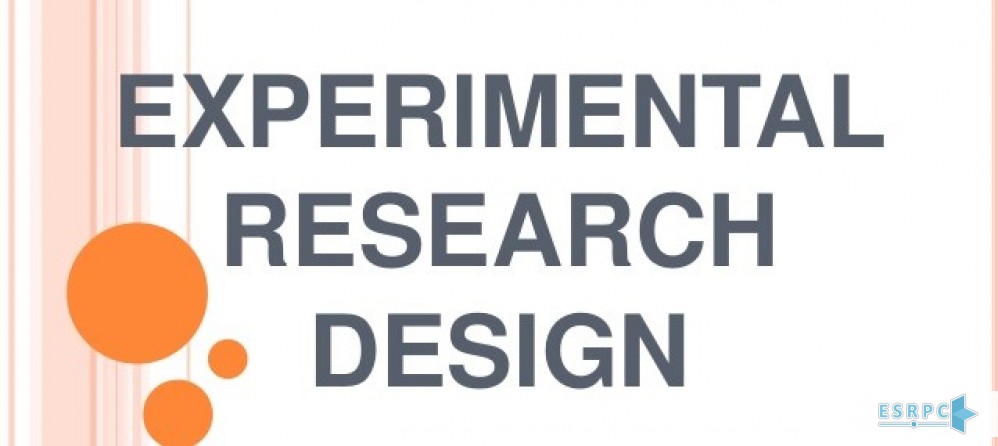Experimental research is a type of study which is commonly used in scientific research designs, and it is the primary approach used to scrutinize the causal (cause/effect) relationships and investigate the relationship between one variable and the other. This kind of research is known as a hypothesis testing or a deductive research method [1] because it is used to support or disprove the hypotheses which are formulated by the researcher to address a specific question or issue [2 & 3].
Keywords in experimental research:
Below, a list of key terminology which is used in experimental research is provided:
- Independent Variable – This variable will be manipulated, that can be called the “cause” or treatment variable.
- Dependent Variable – This variable is the “effect” or outcome of manipulating the independent variable. The crucial point here is that the outcome must be measurable.
- Experimental Group – It is the group that receives the treatment.
- Control Group – This is the group that remains fixed, and at the end, it is compared to the experimental group.
Kinds of experimental designs:
Pre-experimental, quasi-experimental, and true experimental designs are the three basic kinds of experimental research designs. A special type of experimental design is determined by the degree to which the researcher assigns subjects to the different conditions and groups [4].
The first and basic kind of experimental design is the pre-experimental design in which the basic experimental steps are followed, but there is no control group. By using this design, the researcher studies a single group and does not make any comparisons between this group and an equivalent non-treatment group [5].
A quasi-experimental design is the second kind of research that looks a little like an experimental design but the subjects are not randomly assigned to the groups [6].
The third and the most important type of experimental design is the true experimental design which is considered as the most accurate type of the experimental research because it uses statistical analysis to support or reject a hypothesis. This kind of design is also regarded to be the only experimental design that can assess cause and effect relationships [7]. Therefore, different types of the true experimental designs are listed below:
- Post-test Only Design: In this type of design, there are two randomly assigned groups, namely as an experimental group and a control group. None of these groups are pretested before the implementation of the treatment. The treatment is applied just to the experimental group, and the post-test is carried out on both groups to measure the effect of the treatment. When it is not possible to pretest the subjects, this type of design is commonly used [4].
- Pretest, Post-Test Only Design: First, the experimental and the control group are formed, then both groups are pretested for the independent variable. After that, just the experimental group receives the treatment, and finally, both groups are post-tested to investigate the effects of the independent variable on the dependent one [4].
- Solomon Four-Group Design: In this kind of design, four groups are randomly formed including Two experimental groups and two control groups. Only two groups are pretested. Then, one pretested group and one un-pretested group get the treatment. All four groups receive the post-test. And, at the end, the post-test results demonstrate the effects of the dependent variable comparing to the effects of the independent variable on the dependent variable. This method is a combination of the previous two methods and potential sources of error are eliminated by using this design [4].
- Factorial Design: Two or more independent variables (factors) are simultaneously manipulated to observe their effects on the dependent variable. This design allows the researcher to test two or more hypotheses in a single project [4].
- Randomized Block Design: When there are intrinsic differences between subjects and possible differences in experimental conditions, this design is used. When there are a large number of experimental groups, the randomized block design makes the groups homogenous [4].
- Crossover Design (also known as Repeat Measures Design): Different orders of the treatment are randomly manipulated to the subjects in this design, and they are assigned to more than one treatment. The compared groups should have an equal distribution of features and there should be a high level of similarity among the subjects. In this type of design, the subjects serve as their own control groups. Crossover designs are very good tools for doing research, but, there is something to be worried about and it is the point that the subjects’ experience with the first treatment may affect their responding to the second treatment or condition [4].
To put it simply, experimental research is aimed at drawing conclusions through controlling the extraneous factors so that the researcher can provide definite conclusions with regard to the effect of the independent variable on the dependent one.
References:
- Babbie, Earl. The Practice of Social Research. 8th ed. Detroit: Wadsworth Publishing Company, 1998.
- https://cirt.gcu.edu/research/developmentresources/research_ready/experimental/overview
- https://cemast.illinoisstate.edu/downloads/hsrs/types_of_research.pdf
- https://cirt.gcu.edu/research/developmentresources/research_ready/experimental/design_types
- https://allpsych.com/researchmethods/preexperimentaldesign/
- https://socialresearchmethods.net/kb/quasiexp.php
- https://study.com/academy/lesson/true-experiment-definition-examples.html
